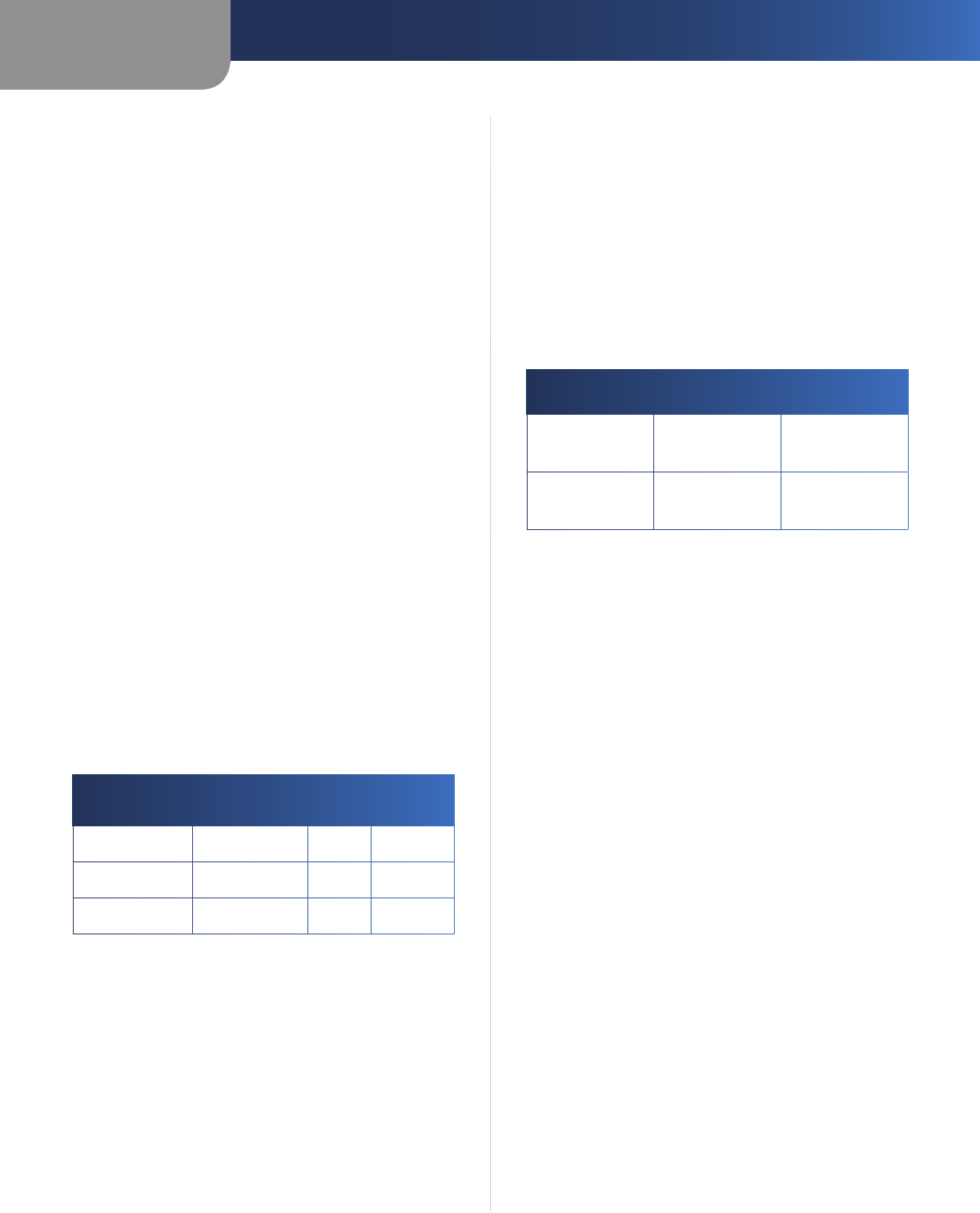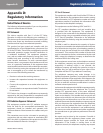
Appendix D
Regulatory Information
18
Wireless ADSL2+ Gateway
National Restrictions
This product may be used in all EU countries (and other
countries following the EU directive 1999/5/EC) without
any limitation except for the countries mentioned below:
Ce produit peut être utilisé dans tous les pays de l’UE (et dans
tous les pays ayant transposés la directive 1999/5/CE) sans
aucune limitation, excepté pour les pays mentionnés ci-
dessous:
Questo prodotto è utilizzabile in tutte i paesi EU (ed in tutti
gli altri paesi che seguono le direttive EU 1999/5/EC) senza
nessuna limitazione, eccetto per i paesii menzionati di
seguito:
Das Produkt kann in allen EU Staaten ohne Einschränkungen
eingesetzt werden (sowie in anderen Staaten die der EU
Direktive 1999/5/CE folgen) mit Außnahme der folgenden
aufgeführten Staaten:
In the majority of the EU and other European countries,
the 2,4- and 5-GHz bands have been made available
for the use of wireless local area networks (LANs). The
table labeled “Overview of Regulatory Requirements for
Wireless LANs” provides an overview of the regulatory
requirements applicable for the 2,4- and 5-GHz bands.
Later in this document you will find an overview of
countries in which additional restrictions or requirements
or both are applicable.
The requirements for any country may evolve. Linksys
recommends that you check with the local authorities for
the latest status of their national regulations for both the
2,4- and 5-GHz wireless LANs.
Overview of Regulatory Requirements for Wireless LANs
Frequency
Band (MHz)
Max Power Level
(EIRP) (mW)
Indoor
ONLY
Indoor &
Outdoor
2400-2483.5 100 X
5150-5350
†
200 X
5470-5725
†
1000 X
Dynamic Frequency Selection and Transmit Power Control are †
required in the frequency ranges of 5250-5350 MHz and 5470-5725
MHz.
The following countries have restrictions and/or
requirements in addition to those given in the table
labeled “Overview of Regulatory Requirements for
Wireless LANs”:
Denmark
In Denmark, the band 5150 - 5350 MHz is also allowed for
outdoor usage.
I Danmark må frekvensbåndet 5150 - 5350 også anvendes
udendørs.
France
For 2,4 GHz, the product should not be used outdoors
in the band 2454 - 2483,5 MHz. There are no restrictions
when used in other parts of the 2,4 GHz band when used
indoors. Check http://www.arcep.fr/ for more details.
Pour la bande 2,4 GHz, l’ équipement ne doit pas être utilisé
en extérieur dans la bande 2454 - 2483,5 MHz. Il n’y a pas de
restrictions pour des utilisations en intérieur dans d’autres
parties de la bande 2,4GHz. Consultez http://www.arcep.fr/
pour de plus amples détails.
Applicable Power Levels in France
Location
Frequency
Range (MHz)
Power (EIRP)
Indoor
(No restrictions)
2400-2483.5 100 mW (20 dBm)
Outdoor
2400-2454
2454-2483.5
100 mW (20 dBm)
10 mW (10 dBm)
Italy
This product meets the National Radio Interface and
the requirements specified in the National Frequency
Allocation Table for Italy. Unless this 2,4-GHz wireless LAN
product is operating within the boundaries of the owner’s
property, its use requires a “general authorization”. Please
check http://www.comunicazioni.it/it/ for more details.
Questo prodotto è conforme alla specifiche di Interfaccia
Radio Nazionali e rispetta il Piano Nazionale di ripartizione
delle frequenze in Italia. Se non viene installato all’interno
del proprio fondo, l’utilizzo di prodotti Wireless LAN a
2,4 GHz richiede una “Autorizzazione Generale”. Consultare
http://www.comunicazioni.it/it/ per maggiori dettagli.
Latvia
The outdoor usage of the 2,4 GHz band requires an
authorization from the Electronic Communications Office.
Please check http://www.esd.lv for more details.
2,4 GHz frekveču joslas izmantošanai ārpus telpām
nepieciešama atļauja no Elektronisko sakaru direkcijas.
Vairāk informācijas: http://www.esd.lv.
Notes:
Although Norway, Switzerland and Liechtenstein are 1.
not EU member states, the EU Directive 1999/5/EC has
also been implemented in those countries.
The regulatory limits for maximum output power are 2.
specified in EIRP. The EIRP level of a device can be
calculated by adding the gain of the antenna used
(specified in dBi) to the output power available at the
connector (specified in dBm).


















